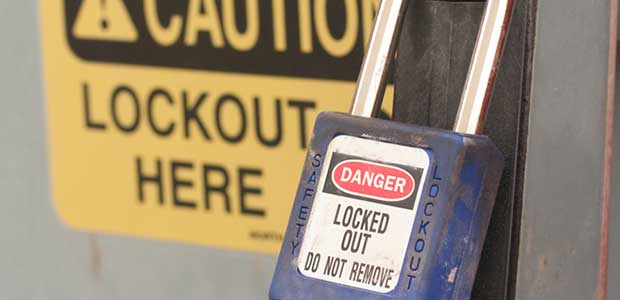
How to Stay OSHA-Compliant with Lockout/Tagout
A well-structured training program helps companies avoid the human and financial costs associated with an OSHA violation.
- By Shawn Smith
- Mar 01, 2022
The construction industry remains one of the most dangerous industries in the U.S. Just last year, fatalities in the private construction industry increased five percent to the largest number since 2007.
In order to limit incidents, workers need clear and actionable safety plans. This means a continuous commitment must be given to performing tasks like regular training sessions, audits and maintenance checks.
These types of checks are especially crucial for lockout/tagout (LOTO) procedures, since they require clear documentation and cooperation from your whole crew. Here are three strategies to stay OSHA-compliant on your construction site with your LOTO practices.
Diagnose Why Lockout/Tagout Violations Are Happening
LOTO violations often occur for three reasons. The first is poor documentation of safety practices for machines and equipment. Authorized employees should have formalized, written procedures for every machine and piece of equipment on their site. “Poor documentation” frequently extends to organizations that fail to document each piece of equipment or fail to document any procedures at all.
The second is inadequate training. Training must be given to any employee who works around dangerous equipment. It isn’t enough to merely provide training to employees directly responsible for operating or applying locks and tags to equipment. Your entire crew must be educated.
The third is prioritizing the speed of a project over its safety. When a construction site operates in this way, mistakes get made. These errors can range from using the wrong LOTO devices to failing to identify each source of hazardous energy. In short, when speed becomes the primary motivator on your site (as opposed to safety), it Is not a question of if a violation will happen, but when.
Another reason violations occur is because LOTO procedures vary. Bigger machines and equipment that impact an entire site’s operation often require a group LOTO effort, whereas smaller machines and equipment usually require just one.
These varying practices also affect the amount of time needed to conduct LOTO i.e. the larger the machine the larger the time commitment. If your site emphasizes quickness over quality, this could lead to violations. LOTO procedures require precision and understanding from a whole crew, even if the whole team isn’t directly involved with that particular LOTO.
This article originally appeared in the March 1, 2022 issue of Occupational Health & Safety.